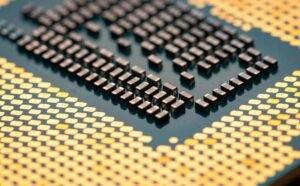Neural Networks List
Neural networks are a type of machine learning algorithm inspired by the structure and function of the human brain. They consist of interconnected nodes, called neurons, that process and transmit information. Neural networks have proven to be highly effective in various applications, such as image recognition, natural language processing, and predictive analytics.
Key Takeaways:
- Neural networks are machine learning algorithms inspired by the human brain.
- They consist of interconnected nodes called neurons.
- Neural networks have applications in image recognition, natural language processing, and predictive analytics.
Overview
Neural networks are designed to simulate the behavior of the human brain, allowing computers to learn and make decisions by recognizing patterns and relationships in data. Through a process known as training, neural networks adjust their weights and biases to optimize their performance on a specific task.
Neural networks are often used in complex tasks where traditional algorithms struggle to perform effectively.
Types of Neural Networks
There are several types of neural networks, each with its own architectural layout and purpose. Some common types include:
- Feedforward Neural Networks
- Recurrent Neural Networks
- Convolutional Neural Networks
- Radial Basis Function Networks
- Self-Organizing Maps
- Hopfield Networks
Advantages of Neural Networks
Neural networks offer several advantages over traditional algorithms:
- Ability to learn from large amounts of data
- Capability to handle complex and nonlinear relationships
- Tolerance to noise and incomplete data
- Parallel processing capabilities for faster execution
- Adaptability to new situations without reprogramming
Applications of Neural Networks
Neural networks find applications in various fields. Some notable examples include:
- Image Recognition: Neural networks can identify and classify objects in images.
- Natural Language Processing: They can understand and generate human language.
- Predictive Analytics: Neural networks can predict future outcomes based on historical data.
- Financial Analysis: They excel in analyzing patterns and making predictions in financial markets.
Neural networks have revolutionized fields such as healthcare, finance, and manufacturing.
Neural Networks vs. Traditional Algorithms
Neural networks offer advantages over traditional algorithms:
- Traditional algorithms are rule-based, while neural networks learn from data and make predictions.
- Neural networks can handle complex, nonlinear relationships, whereas traditional algorithms may struggle.
- Traditional algorithms require manual feature engineering, while neural networks extract features automatically.
- Neural networks can generalize patterns, making them more adaptable to new data.
Types of Neural Networks with Brief Descriptions:
| Type | Description |
|---|---|
| Feedforward Neural Networks | Information flows in one direction from input to output nodes. |
| Recurrent Neural Networks | Have connections that allow cycles in the network, enabling memory and temporal learning. |
| Convolutional Neural Networks | Designed for analyzing visual data, such as images. |
| Type | Description |
|---|---|
| Radial Basis Function Networks | Use radial basis functions as activation functions for each neuron. |
| Self-Organizing Maps | Can be used for unsupervised learning and clustering. |
| Hopfield Networks | A form of recurrent neural network used for associative memory tasks. |
Conclusion
Neural networks are powerful machine learning algorithms inspired by the human brain. They have proven to be highly effective in a wide range of applications, including image recognition, natural language processing, and predictive analytics.

Common Misconceptions
Neural Networks are Capable of Human-like Thinking
One common misconception about neural networks is that they possess the ability to think and reason like humans. While neural networks can mimic certain aspects of human cognition, they lack the true understanding, consciousness, and creativity that humans possess.
- Neural networks are based on mathematical algorithms and calculations.
- They lack consciousness and self-awareness.
- Neural networks rely on data and patterns to make decisions, rather than intuition or experience.
Neural Networks are Always Superior to Traditional Algorithms
Another misconception is the belief that neural networks always outperform traditional algorithms in every scenario. While neural networks excel in certain areas such as image recognition and natural language processing, they may not always be the best choice for every problem or dataset.
- Traditional algorithms can be more efficient for simpler problems.
- Neural networks require extensive computational resources and training data.
- Choosing the right algorithm depends on the specific problem and available resources.
Neural Networks are Infallible
Some people mistakenly believe that neural networks are infallible and immune to errors. However, like any other machine learning model, neural networks are prone to mistakes and can produce incorrect predictions or classifications.
- Neural networks can be influenced by biased or incomplete data.
- They may struggle to interpret ambiguous or noisy input.
- Insufficient training or overfitting can lead to poor performance.
Neural Networks Understand Context
Contrary to popular belief, neural networks don’t truly understand context in the same way humans do. While they can learn patterns and dependencies in data, they lack true comprehension of the meaning and context behind the information they process.
- Neural networks rely on statistical associations rather than semantic understanding.
- They cannot grasp sarcasm, irony, or conceptual nuances.
- Understanding context requires more than pattern recognition.
Neural Networks are a Magic Solution
Lastly, some people mistakenly think that neural networks are a magic solution that can solve any problem effortlessly. In reality, developing and training neural networks requires expertise, domain knowledge, careful design, and data preparation.
- Neural networks require significant computational power and time for training.
- Well-designed architectures and algorithms are crucial for their success.
- Human expertise is necessary to oversee and refine neural network models.

The Evolution of Neural Networks
Neural Networks are a key component of artificial intelligence, designed to mimic the structure and functionality of the human brain. Over the years, researchers and scientists have made significant advancements in the field of neural networks, allowing for groundbreaking applications in various industries. Here, we present ten fascinating examples that highlight the evolution of neural networks and their impact on our society.
Table 1: First Neural Network
In 1943, neurophysiologist Warren McCulloch and logician Walter Pitts collaborated to develop the first conceptual model of a neural network. Inspired by the firing patterns of neurons, this model consisted of interconnected artificial neurons that could perform basic logical functions.
| No. | Year | Advancement |
|---|---|---|
| 1 | 1943 | First conceptual model of a neural network |
Table 2: Perceptron
In 1957, Frank Rosenblatt introduced the Perceptron, which marked a major milestone in neural network development. It was the first algorithm capable of learning and imitating simple patterns, leading to exciting possibilities in pattern recognition and image classification.
| No. | Year | Advancement |
|---|---|---|
| 2 | 1957 | Introduction of the Perceptron |
Table 3: Backpropagation Algorithm
In 1986, the Backpropagation algorithm was developed, revolutionizing the field of neural networks. It enabled the training of multi-layered neural networks, allowing for more complex pattern recognition tasks and the ability to model nonlinear relationships.
| No. | Year | Advancement |
|---|---|---|
| 3 | 1986 | Introduction of the Backpropagation algorithm |
Table 4: Convolutional Neural Networks
In 1998, Yann LeCun and his team developed Convolutional Neural Networks (CNNs) tailored for image recognition tasks. CNNs introduced the concept of convolutional layers, which allowed for automatic feature extraction and revolutionized the accuracy of image classification algorithms.
| No. | Year | Advancement |
|---|---|---|
| 4 | 1998 | Introduction of Convolutional Neural Networks (CNNs) |
Table 5: Recurrent Neural Networks
In 1982, John Hopfield developed Recurrent Neural Networks (RNNs) capable of retaining contextual information. RNNs have proven crucial for tasks such as natural language processing, speech recognition, and handwriting recognition.
| No. | Year | Advancement |
|---|---|---|
| 5 | 1982 | Introduction of Recurrent Neural Networks (RNNs) |
Table 6: Long Short-Term Memory (LSTM)
In 1997, Hochreiter and Schmidhuber introduced Long Short-Term Memory (LSTM) networks, a type of RNN capable of learning and retaining information over extended periods. LSTMs have greatly improved the accuracy of speech recognition, language translation, and other sequential data tasks.
| No. | Year | Advancement |
|---|---|---|
| 6 | 1997 | Introduction of Long Short-Term Memory (LSTM) networks |
Table 7: Generative Adversarial Networks (GANs)
In 2014, Ian Goodfellow introduced Generative Adversarial Networks (GANs), a revolutionary approach enabling the generation of high-quality synthetic data, such as images and music. GANs have sparked advancements in computer vision, art creation, and data augmentation.
| No. | Year | Advancement |
|---|---|---|
| 7 | 2014 | Introduction of Generative Adversarial Networks (GANs) |
Table 8: Transfer Learning
In 2012, AlexNet, a deep convolutional neural network, demonstrated the potential of transfer learning. By pretraining on a large dataset and then fine-tuning on a specific task, neural networks became capable of leveraging knowledge from one domain to excel in another. This revolutionized the field of deep learning.
| No. | Year | Advancement |
|---|---|---|
| 8 | 2012 | Introduction of Transfer Learning using AlexNet |
Table 9: Reinforcement Learning
In 1998, Gerald Tesauro used a neural network to develop a backgammon-playing program that learned through self-play and reinforcement learning. Reinforcement learning has enabled the creation of autonomous agents capable of making decisions and learning from trial and error in various domains.
| No. | Year | Advancement |
|---|---|---|
| 9 | 1998 | Development of backgammon-playing program using Reinforcement Learning |
Table 10: Neural Networks in Medicine
Neural networks have made remarkable contributions to the field of medicine, ranging from disease diagnosis to drug discovery. With their ability to detect patterns in complex medical data, neural networks have aided in early detection of diseases, personalized treatment plans, and predicting patient outcomes.
| No. | Year | Application |
|---|---|---|
| 10 | Various | Disease diagnosis, drug discovery, treatment planning, patient outcome prediction, etc. |
These ten examples provide a glimpse into the diverse advancements made in the exciting field of neural networks. The evolution of neural networks has revolutionized many areas of our lives, offering immense potential for future innovations and discoveries. As researchers continue to explore the possibilities, we eagerly anticipate the next breakthrough that will shape our world.
Frequently Asked Questions
What are neural networks?
A neural network is a type of artificial intelligence model that is inspired by the structure and functionality of a human brain. It is composed of interconnected nodes, called artificial neurons or perceptrons, which are organized into different layers and can process and transmit information.
How do neural networks learn?
Neural networks learn by adjusting the connection weights between neurons based on the patterns and inputs they receive. This process, known as training, involves providing the network with labeled data and iteratively updating the weights to minimize the difference between the predicted and actual outputs.
What are the advantages of using neural networks?
Neural networks have several advantages, such as their ability to learn complex patterns from large datasets, their robustness against noisy or incomplete data, and their capability to generalize knowledge to unseen examples. They are also highly parallelizable, making them suitable for parallel computing architectures.
What are the limitations of neural networks?
Neural networks can be computationally expensive, especially for large models with numerous parameters. They also require substantial datasets for effective training and may be prone to overfitting if the model is too complex relative to the available training data. Additionally, they lack transparency, making it difficult to understand the reasoning behind their decisions.
What are some common types of neural networks?
There are various types of neural networks, including feedforward neural networks, convolutional neural networks (CNN), recurrent neural networks (RNN), and generative adversarial networks (GAN). Each architecture has its own specific strengths and applications, such as image recognition for CNNs and sequence modeling for RNNs.
How are neural networks used in practical applications?
Neural networks are widely used in many practical applications, such as image and speech recognition, natural language processing, recommendation systems, financial forecasting, and medical diagnosis. They excel at tasks that involve complex pattern recognition, classification, regression, and time-series analysis.
Can neural networks be used for real-time tasks?
Yes, neural networks can be used for real-time tasks, but it depends on the complexity of the model and the computational resources available. Smaller networks or specialized hardware can enable real-time processing, which is often required for applications like autonomous vehicles and real-time data analysis.
What is deep learning?
Deep learning is a subfield of machine learning that focuses on training neural networks with multiple hidden layers, known as deep neural networks. These deep architectures are capable of automatically learning hierarchical representations of the input data, enabling them to capture more abstract features and achieve superior performance in certain tasks.
What is transfer learning in neural networks?
Transfer learning is a technique that allows pre-trained neural network models, which have been trained on a large dataset, to be applied to different but related tasks with limited training data. By leveraging the learned features from the pre-training, transfer learning can accelerate the training process and improve the overall performance of the model.
How can one evaluate the performance of a neural network model?
The performance of a neural network model can be evaluated using various metrics, depending on the task at hand. Common evaluation metrics include accuracy, precision, recall, F1-score for classification problems, mean squared error (MSE) for regression problems, and perplexity for language models. Cross-validation and test/validation datasets are often employed to assess generalization performance.




